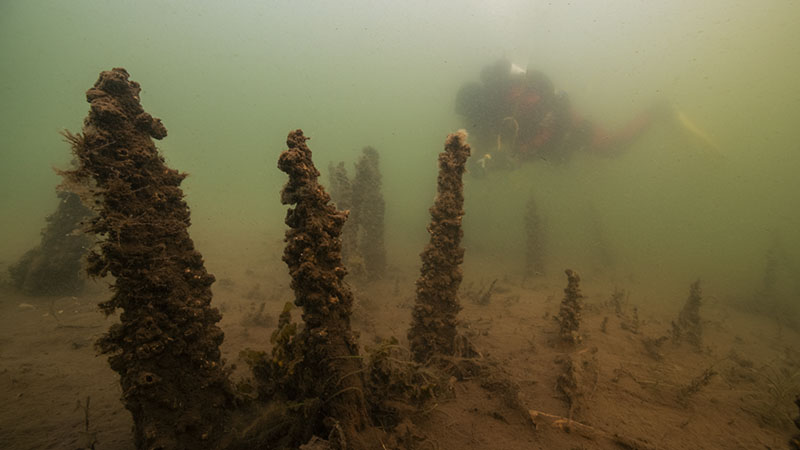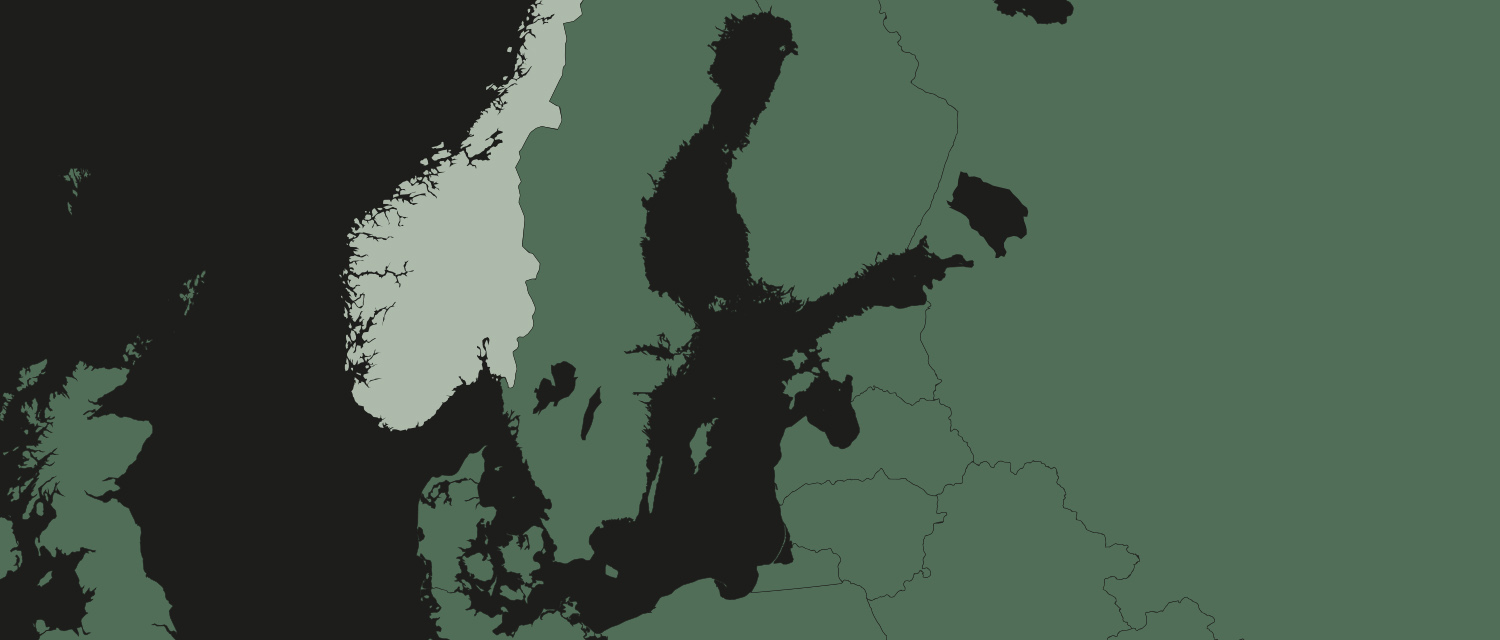A previously unknown barrier installation, made of timber carved in the winter of 1113, has been discovered near Karlskrona in Blekinge. Thousands of wooden piles were driven into the seabed, and during the late Viking Age and early Middle Ages defended the entrance to the river Lyckebyån in what was then Denmark. The church, the king and the local elite all wanted to gain control over the area, and the barrier likely played a vital role in preventing intruders from coming ashore.
The barrier was discovered when maritime archaeologists were looking for a shipwreck somewhere between the islands of Verkö and Länsman. What seemed like an entire forest of heavily eroded piles suddenly greeted them. The piles turned out to be mainly made of oak that had either been split or radially cracked. This is a method that avoids sawing off the fibres in the wood in order to better maintain strength.
These thousands of piles blocked off the straits heading in to Lyckeby. The fact such large and extensive installations were bulit reveals the importance of the area. Perhaps the iron exports are what they were to protect, or maybe they served as protection against pirates.
The barrier could be supplemented with blockships, booms or chains. Although it is unclear how these were installed, a description by Olaus Magnus from the 1550s tells us how structures were made for driving the piles into the seabed from the ice. The identity of the barrier’s builders in Lyckebyfjärden remains unknown.
Usually, the barriers were built using wooden piles driven vertically into the seafloor and protruding upwards, ending just below or above the water’s surface.


